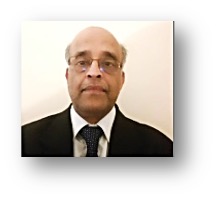Combined/simultaneous measurements of a range Synchrotron radiation (SR) based techniques with either another SR or optical spectroscopy-based methods has been a valuable addition to a suite of structural methods available in a synchrotron radiation source, in the determination of structures in a variety of solids. Furthermore, addition of operando methods, for example, mass spectrometry to analyse evolving gases, have gained considerable momentum in the last two decades. A range of functional materials, which includes heterogeneous catalysts, electronic materials, ceramics etc. have benefitted using these combined methods. Significant advantage of this combined measurement is that the same solid is investigated under identical reaction conditions. Furthermore, this combined method can provide atomic architecture of a solid, that is undergoing changes at different length scales in the same material, under reaction conditions, that can be gained in a single experiment. Here, examples of converting an amorphous gel to a crystalline microporous solids, phase transformation of zinc peroxide to zinc oxide through the formation of amorphous intermediate and formation micro/meso hybrid structures will be shown as examples to demonstrate the power of these combined measurements.
Biography

Professor Gopinathan Sankar obtained his Ph.D. from Indian Institute of Science, Bangalore in 1987. He was elected as the Young Associate fellow of Indian Academy of Sciences in 1988 for his contribution to X-ray spectroscopy. He joined the Royal Institution of GB in 1990 where he held several positions, which includes PDRA, Assistant Director of DFRL, Leverhulme Senior Research Fellow. He became Professor of Solid State Chemistry in 2004, at the Royal Institution and moved to Department of Chemistry, University College London, in 2007 where he continue his research in the in the study heterogeneous catalytic materials. In addition, his group uses advanced Synchrotron Radiation techniques to investigate formation of catalytic materials, structure of these catalytic materials at various length scales. His research focusses on the determination of structure function relationships.
Prof. Sankar was awarded a Royal Society Industry Fellowship to carry out collaborative research with Johnson Matthey plc. and he continue to closely work with scientists at Johnson Matthey.
He has supervised over 45 PhD and Post-Doctoral researchers.
He has over 300 publications and his current H-index is 64 with overall citations over 15600.




